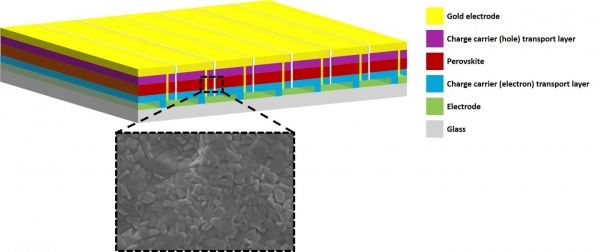Researchers from the Okinawa Institute of Science and Technology Graduate University (OIST) have created perovskite solar modules with improved stability and efficiency by using a new fabrication technique that reduced defects. Their findings were published on the 25th January in Advanced Energy Materials.
Perovskites are one of the most promising materials for the next-generation of solar technology, soaring from efficiencies of 3.8% to 25.5% in slightly over a decade. Perovskite solar cells are cheap to produce and have the potential to be flexible, increasing their versatility. But two obstacles still block the way to commercialization: their lack of long-term stability and difficulties with upscaling.
“Perovskite material is fragile and prone to decomposition, which means the solar cells struggle to maintain high efficiency over a long time,” said first author Dr. Guoqing Tong, a postdoctoral scholar in the OIST Energy Materials and Surface Sciences Unit, led by Professor Yabing Qi. “And although small-sized perovskite solar cells have a high efficiency and perform almost as well as their silicon counterparts, once scaled up to larger solar modules, the efficiency drops.”
Read more at: Okinawa Institute of Science and Technology
Perovskite solar cell devices require multiple layers to function. The active perovskite layer absorbs sunlight and generates charge carriers. The transport layers transport the charge carriers to the electrodes, releasing a current. The active perovskite layer is formed from many crystal grains. The boundaries between these grains, and other defects in the perovskite film, such as pinholes, lower the efficiency and lifespan of the solar devices. (Photo Credit: OIST)


